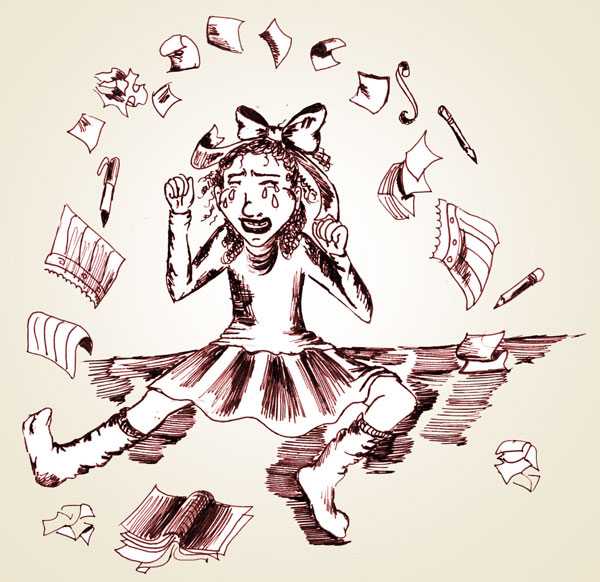
Note-taking constitutes such a routine activity in students’ academics that it seems to be something students just do upon the teacher’s command, without much thought. However, it seems that simultaneously trying to copy down what’s on the board, listening to the teacher, and comprehending what’s being taught in the lecture may not be effective.
Freshman AVID student Eduardo San Miguel says, “Note-taking distracts from the learning if a student is copying down word for word.”
According to the Center for Research on Learning and Teaching in University of Michigan, students fail to record 40 percent of the significant points in a typical lecture, and yet even when students do record the main ideas, they write only up to 11 percent of important supporting ideas.
Studies also show that teachers only deliver an average of 10 percent of the notes on the board orally.
U.S. History teacher Will Colglazier says, “I’m absolutely aware that note-taking can distract students from learning and they can be focused on copying each word down, so that’s why in my PowerPoints, I don’t have everything they need down. I would put a word in there but without the definition. I would say the definition, but not put it up there because I don’t want them to turn their brains off and just copy … They need to listen and evaluate what I’m saying, being able to choose what the correct thing to write down is, and that takes practice.”
“I assign note-taking from the textbook for my AP U.S. History class because they have to read and understand a large amount of information each week, says Social Studies teacher Heather Sadlon. When I was in high school, I remember speed-reading chapters to cram for quizzes and tests, which I usually did pretty well on. But if you asked me a week later to put together a coherent historical argument using evidence I read about the previous week? I would probably be lost.”
Sadlon elaborates, “I think the key to true understanding is to first learn the information and then to use it over and over again, see it in different settings, draw a variety of conclusions from it. This isn’t something that can be done in one sitting taking notes with a textbook — at best most students (including me) will gain a very surface level understanding of the material the first time reading it.”
While note-taking is the main study method Sadlon enforces and supports, Colglazier has a different perspective on note-taking.
“A great professor in college taught me how one of the vital life skills is to make sure that you learn how you learn,” says Colglazier. “If that means to take notes handwritten, if that means to take notes typed, if that means to read the textbook once then read it a second time and take notes — however it is that you learn, you’ve got to figure it out.”
While testing and quizzing is a facet of gauging the effectiveness of note-taking and in-class lecturing, teachers also attempt to supplement this process in different ways. Sadlon says, “I try to have a lot of graphic organizers and skeleton notes to help focus our work in class while minimizing standard lectures… Notes taken in class or for homework should be useful for review – if students are taking notes that aren’t useful, there is no point.”
While Colglazier and Sadlon, both social studies teachers, have noticeable differences with regards to how they enforce note-taking as a homework assignment, the way in which teachers utilize technology can also make a significant difference in a student’s note-taking experience in class.
Senior Elkana Chan discusses how her note-taking strategies in two different advanced math classes, Calculus BC and multivariable calculus, depend on whether the teacher utilizes technology. “Mr. Serrao never used any technology at all compared to Mr. Shahrvini who always uploads his notes on Schoolloop. I made sure to really take notes during Mr. Serrao’s class because there was no option to get [the notes] another way.”
Although many teachers do not require students to take notes during lectures or for homework, AVID students are required Cornell notes which they must turn it at the end of every week. San Miguel offers his own thoughts on this program. “Well for starters, I don’t think [being in AVID] impacts [my note-taking] too much,” he says. “Notes are notes either way, I just do a different form, Cornell notes, and I have to take more notes than most people. Being in AVID probably makes me dislike note-taking just a little [compared to non-AVID students]. It gets stressful at some point … having to turn in all those notes each week for AVID class. But it is useful occasionally.”
“Ultimately, every teacher needs to consider the best way to teach both skills and content to their students,” says Sadlon. “There’s no ‘right way’ to do it. It’s great that students are exposed to so many teachers and teaching styles while in high school because they have the exposure to many methods for learning. By the time they get to college, they can pick and choose the methods that work best for them.”




